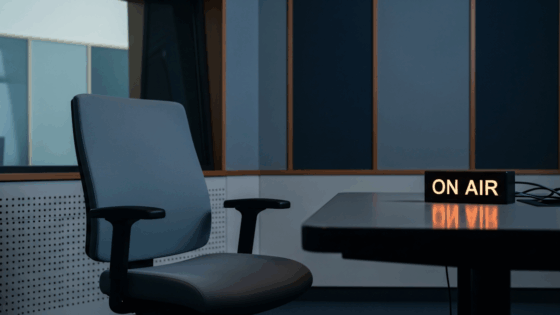on
BY SIMONE J. SMITH
Last week I posted a picture of myself and my siStar Anandie Talfie, with some commentary on body dysmorphic disorder, and how it has become a prevalent mental health disorder. I received numerous comments thanking me for bringing this topic up, because it has come to a point that this mental disorder is placing our younger people in danger.
When you go on social media all it does is encourage users to compare themselves to others, and this can lead to feelings of inadequacy and low self-esteem. I want readers to overstand that what you see on social media is not REAL! What you see has been carefully curated and edited, yet there are a growing number of people who are trying to measure up to these perceived standards.
Users often use photo-editing tools and filters to enhance their appearance, leading to unrealistic beauty standards; I had a friend tell me that a woman actually used A.I. to create her body, and when he saw her, he was like, “This ain’t you!” Social media can create a distorted view of what is considered normal or beautiful. It doesn’t help that influencers and celebrities now set the tone for beauty standards. Their lifestyles, body types, and beauty routines can create an unrealistic ideal that many users may strive to achieve, sometimes at the cost of their physical, or mental health.
Over the years, Janet Jackson has faced speculation about undergoing various cosmetic procedures, including rhinoplasty. Wendy Williams has been open about her experiences with plastic surgery, including breast augmentation and liposuction. Then we have reggae superstar Spice. This energetic entertainer confessed that she managed to get a Brazilian Butt Lift (BBL), liposuction, and breast lift in one take when she visited the Dominican Republic. She shares that it was to help remove the naturally occurring hip dips which plagued her self-confidence over the years.
We are all familiar with rapper and reality TV star Belcalis Almanzar (aka, Cardi B), who doesn’t deny that she had plastic surgery. In fact, she references her cosmetic augmentations in her songs and openly talks about them during interviews.
The free-spirited, rambunctious rapper said the reason why she wanted to improve her looks is because she needed to feel more confident about herself and wanted to be a successful celebrity. She originally wanted liposuction to facilitate a fat transfer, but she didn’t have enough fat on her body, so the surgeon suggested injectable fillers and she went for it.
Reportedly, Cardi B’s butt procedure leaked for five days and when she returned to the clinic, it was already closed because another patient died on the table (yes, you read that). Her story, however, is a big lesson for anyone considering getting plastic surgery and how dangerous it can get if you don’t choose a reputable surgeon.
Kim and Chloe Kardashian, Kylie Jenner, Nikki Minaj, and of course the man the media loved to expose, the great Michal Jackson…
There is an insidious agenda, a narrative of perfection that is being pushed here in North America, and it takes different forms all over the world, in different countries and cultures. It is the reason why in recent years we have witnessed a growing interest in psychiatric disturbances involving body image. It is undeniable that the number of messages related to body image in the media has increased considerably. This mediatization of the body now dictates and strengthens the standards by which an individual can catalog a body as desirable or not.
One of the most dangerous effects of the media on body image is that social success is directly linked to the body image that the person possesses. Television, magazines and social media strive to present idealized characters, and this promotes an unattainable epitome of beauty. In an article titled, “Unfiltered: The Effect of Media on Body Image Dissatisfaction (2017),” researchers share that the canon of beauty is the set of characteristics that a society considers conventionally attractive, or desirable. The saturation of images representing “perfect beauty’ is spread all over the world everyday across multiple channels. It has now invaded other cultures and their perceptions of self.
I want to introduce the term Body Dysmorphic Disorder. It is known as a mental disorder in which a person suffers from concern and distress with the perceived defects in their appearance and subsequently can experience significant impairment in social, occupational, and interpersonal functioning. People with this disorder may have feelings of shame and disgust about the perceived imperfections. Studies now indicate that there is a high tendency towards cosmetic surgery among individuals who suffer from this disorder.
It is clear that this form of body dissatisfaction is more common today than a generation ago and is widely recognized; I think that now is the time to drop an important note; although some may assume that this disorder is more prevalent in women, men are not exempt from going to extremes to change their appearance, and it has been happening for a while.
In 1997, researchers began to study “Muscle Dysmorphia An Underrecognized Form of Body Dysmorphic Disorder.” It is described as a novel form of BDD, probably underrecognized, which is termed “muscle dysmorphia.” Unlike typical patients with BDD, who are usually concerned with a specific body part (e.g., face, skin, hair, or nose), persons with muscle dysmorphia are pathologically preoccupied with the appearance of the body as a whole; they are concerned that they are not sufficiently large, or muscular; their lives become consumed by weightlifting, dieting, and associated activities.
Naturally there are consequences associated with this disorder; they include: profound distress about being seen in public, impaired social and occupational functioning, and abuse of anabolic steroids and other drugs.
Those navigating this disorder take the ultimate risk with their bodies and go under the knife. The researchers who investigated, “Body dysmorphic disorder in individuals requesting cosmetic surgery: A systematic review and meta-analysis (2022)” assessed 188 BDD patients. They found that the most commonly affected body parts include skin (65%), hair (55%), nose (39%), eyes (19%), and breasts for women (18%), or bones for men (14%). The unhappiness with these features, and the repeated messages of, “If you don’t like it, you can change it,” pushes people to take the ultimate step and subject themselves to needless pain. In the end, there is no true satisfaction, and they go under the knife, again, and again.
Society is an ever-changing entity. The media is a catalyst that influences society’s way of acting, thinking, lifestyles, customs, consumption, and opinions. With constant exposure, these idealized perceptions of beauty are slowly internalized and thought of as needed. Our current media has constructed idealized portrayals of beauty that have led people to believe they can attain an appearance that is not natural but constructed.
This beauty ambition is unreachable; what will continue to happen is an unseen evolution of people, who have severe health and mental complications: low self-esteem, body dissatisfaction, anorexia, and unhappiness regardless of their actual physical state.
Be mindful of judgment; people are suffering, and we have to find a way to support them.
Stay in the loop with exclusive news, stories, and insights—delivered straight to your inbox. No fluff, just real content that matters. Sign up today!
We, as humans are guaranteed certain things in life: stressors, taxes, bills and death are the first thoughts that pop to mind. It is not uncommon that many people find a hard time dealing with these daily life stressors, and at times will find themselves losing control over their lives. Simone Jennifer Smith’s great passion is using the gifts that have been given to her, to help educate her clients on how to live meaningful lives. The Hear to Help Team consists of powerfully motivated individuals, who like Simone, see that there is a need in this world; a need for real connection. As the founder and Director of Hear 2 Help, Simone leads a team that goes out into the community day to day, servicing families with their educational, legal and mental health needs.Her dedication shows in her Toronto Caribbean newspaper articles, and in her role as a host on the TCN TV Network.













